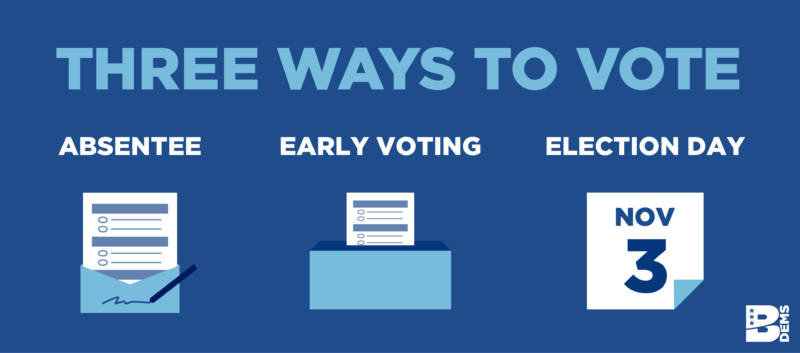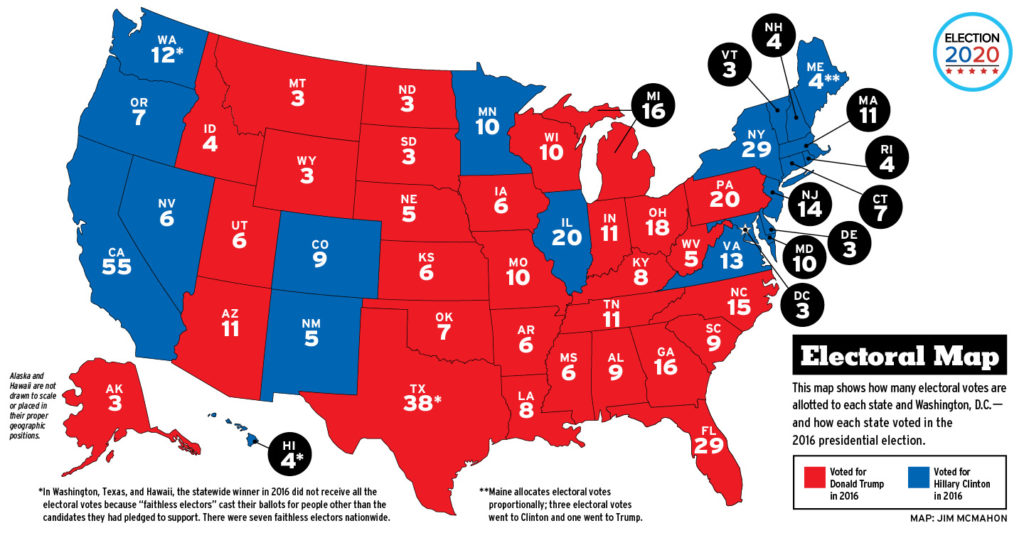
The US Presidential election has a complicated voting process. It’s all good though, we’re here to break it down for you.
The Electoral College

Source: New York Times
It’s impossible to understand the intricacies of the US electoral system without understanding the electoral college.
This essentially means that each state in the country is allocated a set number of electors. Americans do not vote directly for a Presidential candidate, but instead, voters are allocated a certain number of electors based on the number of representatives in congress to each state.
The electors then cast the ballots after the election and determines who the next President will be.
That’s why states like California and Texas are important to the election, California has the most electoral votes at 55 and Texas has 38. California has historically been a Democrat safe zone, and Texas a Republican state.
In total, there are 538 electoral votes. A Presidential candidate must get more than 270 to win the election.
The outcome of the presidential election depends on the result of the popular vote in each state. But states don’t get an equal say.
The US’s electoral system assumes a winner-takes-all concept. This means that the candidate with the highest number of votes in a state claims all of that state’s electoral votes, even if they win by a super slim margin.
A real life example: in 2016, President Trump beat Hilary Clinton in Florida by a margin of just 2.2%, but that meant he claimed all 29 electoral votes in Florida.
Controversy to the Electoral College
While the number of electoral votes a state is assigned somewhat reflects its population, the minimum of three votes per state means that the value of states varies across the country. Does this mean some states are more important than others? The Electoral College assumes so.
Strangely enough, although California has the most electoral voters in the country, its still pretty unrepresented, because of the population size.
Wyoming has one electoral college vote for every 193,000 people, compared with California’s rate of one electoral vote per 718,000 people.
Each electoral vote in California represents over three times as many people as one in Wyoming.
Because candidates typically win easily in their solid red/blue states, the stakes are higher when it comes to swing states-the true battleground states. Again, this is sometimes controversial and not entirely representative of the demographic.
In 2016, Trump won six such states – Florida, Iowa, Michigan, Ohio, Pennsylvania and Wisconsin – adding 99 electoral votes to his total. They are also the states with the least non-white voters as well as older white voters.
Demographics play a crucial role.
There’s been suggestions to modify the US Presidential election system, but its hard to overhaul a national system. Political scientists have suggested a direct national popular vote system, which would simply require voters to vote specifically for a candidate-and the one with most votes would win.
Easier said than done.
The voting process
There’s 3 ways to vote in the Presidential Election.
- Absentee Voting
- In Mail Voting
- In person on election day (November 3rd)
This actually marks a historic year for in-mail voting, with pre-election voting surpassing half of all 2016 ballots cast already. Over 68.5 million votes have been cast.
Pre-Election Day voting is booming amid the ongoing coronavirus pandemic, and states are reporting record-breaking turnout as voters are energized to vote by mail or early in person before November 3. What more, half of the votes already cast this cycle come from those 16 key states needed to win the Presidency.




